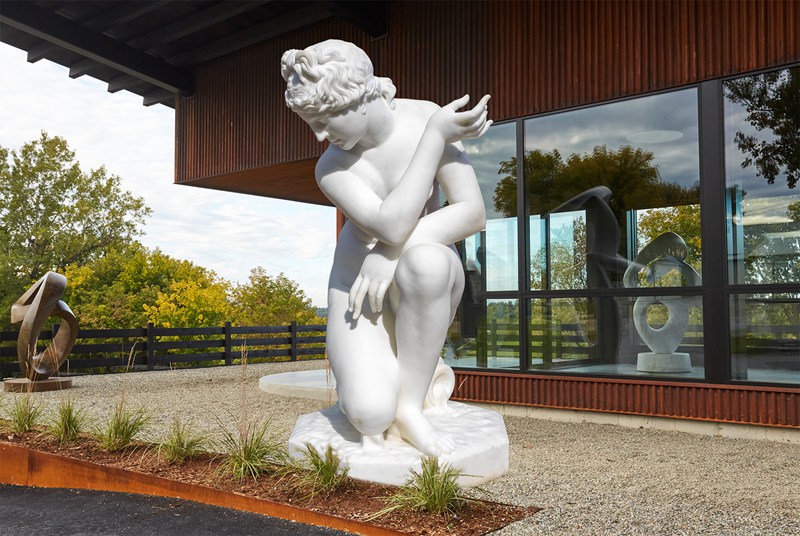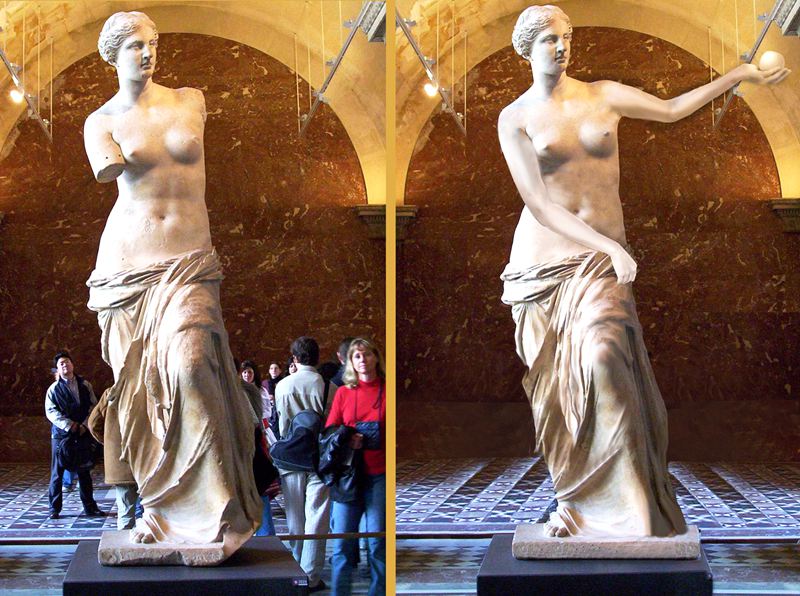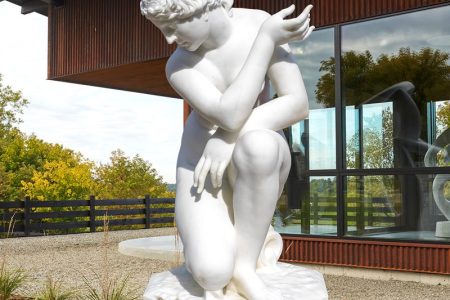Aphrodite, known as the ancient Greek goddess, is closely associated with love, beauty, joy, and fertility. She is revered for her captivating allure and her role in guiding matters of the heart.
Venus, the Roman goddess, shares similar attributes with Aphrodite, encompassing love, beauty, desire, prosperity, and victory. She holds a significant position in Roman mythology and is celebrated for her charm and grace.

Both deities symbolize the essence of femininity and represent the timeless ideals of love, beauty, and pleasure. Their influence extends beyond the realms of mythology, as they continue to inspire artists and captivate the imaginations of people worldwide.
The allure of Aphrodite and Venus has transcended time and cultures, making them iconic figures in the pantheon of goddesses. Their stories and symbolism have left a lasting impression on the world of art, literature, and human emotions. As symbols of love and beauty, they remain eternal muses, igniting the flames of creativity and adoration in the hearts of those who encounter their timeless depictions.

Check Out: Unveiling the Marble Venus Sculpture
Lely Venus-Crouching Aphrodite Statue
The Lely Venus, also known as “Crouching Aphrodite,” is a marble statue depicting the Greek goddess Aphrodite in a surprised bathing pose.
This ancient artwork belongs to the “Crouching Aphrodite” type, with its history dating back to around 100 AD. The statue shows Aphrodite crouching down with her right knee close to the ground and her head turned to the right. In most versions, she extends her right arm over her left shoulder to cover her breasts.
This variant of Aphrodite was widely popular and spread extensively, as evidenced by the numerous copies found in Roman ruins in Italy and France. The trend of creating nude statues of Aphrodite reflected a shift in male attitudes toward depicting female nudity in art. Earlier, only male statues were depicted nude.
The original sculptor of the life-sized nude Aphrodite statue rolls in the 4th century BC was Praxiteles, and Venus is her Roman name. Subsequently, Greek sculptors created several new types of nude Aphrodite statues.
The statue’s three-dimensionality and intricate hairstyle are typical features of ancient Greek sculptures. Many examples of the Crouching Aphrodite have been prized possessions of famous royals and nobles throughout history. Since the late Renaissance, these sculptures have influenced modern sculptors and have been inspiring artists since the early 1500s.
One of the earliest recorded instances of this statue was in the Gonzaga collection in Mantua, Italy. The artist Rubens saw it while on a diplomatic and art-collecting mission for King Charles I of England. He acquired the “Crouching Aphrodite” from the Gonzaga collection in 1628. After the dispersal of Charles’s art collection during the Commonwealth period, the statue came into the possession of the painter and connoisseur Sir Peter Lely, who gave it its name.
Two years after Lely’s death in 1682, the statue was reacquired into the Royal Collection. After careful preservation, it is now on long-term loan to the British Museum, where it is displayed prominently.
What Greek Statue has Stomach Rolls?
The Greek statue that features stomach rolls is indeed the “Lely Venus,” also known as the “Crouching Aphrodite.” Created by the ancient Greek sculptor Praxiteles during the 4th century BCE, this marble sculpture is one of the earliest life-sized depictions of a female figure in a crouching position. It showcases the goddess Aphrodite with a naturalistic and soft body, including stomach rolls, which was a departure from the idealized portrayals of the female form common in classical Greek art. The sculpture’s realistic representation of Aphrodite’s body contributed to its fame and significance in the art world.
Lely Venus – Crouching Aphrodite
Aphrodite of Knidos Statue
Aphrodite of Knidos, also known as the Knidian Aphrodite or the Cnidus Aphrodite, is a sculpture of the ancient Greek goddess Aphrodite, created by the Athenian sculptor Praxiteles around the 4th century BCE. It stands as one of the earliest life-size representations of a nude female figure in Greek history, presenting a different concept from the prevalent male nude heroes. Praxiteles’ “Aphrodite” is depicted in the nude, reaching out to grab a towel while covering her pubic area, which, in turn, exposes her breasts. Up until then, Greek sculpture had predominantly focused on male nude figures. The original Greek statue no longer exists; however, this influential artwork has survived through numerous Roman copies. Variants of the statue, such as the Venus Pudica (suggesting the covering of the breasts gesture), include the Medici Venus and the Capitoline Venus.
Check Out: Aphrodite of Knidos
Aphrodite Statue Meaning
The marble statue of Aphrodite is a masterpiece of ancient Greek sculpture, representing the goddess of love, beauty, and desire. This statue is a classic example of the idealized female form that was prevalent in ancient Greek art.
The statue depicts Aphrodite in a graceful and elegant pose, with her body subtly curved and her limbs delicately balanced. She stands with one leg slightly forward, giving a sense of movement and fluidity to the sculpture. Her arms are raised slightly, and she may have once held an attribute, such as a mirror or an apple, although these elements might be missing due to the statue’s age.
Aphrodite’s face is serene and serene, reflecting the beauty and divine nature of the goddess. Her eyes are often depicted with a dreamy and introspective gaze, symbolizing her connection to love and desire.
The sculptor has paid great attention to the details of the drapery, which clings to Aphrodite’s body in a way that emphasizes her curves and contours. The soft folds of the fabric add a sense of realism and texture to the statue, showcasing the skill and craftsmanship of the artist.
The marble statue of Aphrodite exudes a sense of timeless beauty and elegance, embodying the ideals of beauty and femininity in ancient Greek culture. It serves as a captivating reminder of the artistic achievements and cultural significance of ancient Greek sculpture.
Where is the Statue of Aphrodite?
The statue of Aphrodite, also known as the Aphrodite of Knidos, was originally created by the Greek sculptor Praxiteles in the 4th century BCE. However, the original statue is no longer in existence. It was once displayed in the ancient Greek city of Knidos.
As for the surviving copies of the Aphrodite of Knidos, many Roman replicas and variations of the statue have been found in different locations around the world. These copies can be found in various museums and private collections, showcasing the enduring influence and popularity of this iconic work of ancient Greek sculpture.
Marble Statue of Aphrodite Analysis
Aphrodite’s facial expression exudes a sense of serene beauty and contemplation. Her features are idealized, reflecting the ancient Greek concept of physical perfection and divine beauty.
The statue’s smooth and polished surface, characteristic of ancient Greek marble sculpture, adds to its sense of elegance and refinement. It captures the essence of grace and femininity, embodying the qualities associated with the goddess Aphrodite.
As a masterpiece of ancient Greek art, the marble statue of Aphrodite continues to be revered and celebrated for its timeless beauty, artistic mastery, and representation of the divine feminine. Its influence on subsequent generations of artists and its enduring popularity testifies to its status as one of the most significant and beloved sculptures in the history of art.
Why is the Statue of Aphrodite so Famous?
The statue of Aphrodite, also known as the Aphrodite of Knidos, is famous for several reasons. Firstly, it is a masterpiece of ancient Greek sculpture, created by the renowned sculptor Praxiteles during the 4th century BCE. Its exquisite craftsmanship and attention to detail have earned it widespread admiration and acclaim.
Secondly, the statue’s portrayal of the goddess Aphrodite, the embodiment of love, beauty, and femininity, resonates with people across cultures and times. The sculpture captures the essence of divine beauty and sensuality, making it an iconic representation of the goddess and an enduring symbol of femininity and grace.
The statue’s innovative and daring depiction of Aphrodite as a nude figure, portrayed in the “Venus Pudica” pose, was groundbreaking in ancient times. This portrayal challenged conventional norms and celebrated the female form in a way that was both graceful and modest.
Check Out: Bronze Aphrodite Statue
Additionally, the Aphrodite of Knidos holds historical significance as one of the earliest life-sized nude female sculptures in Greek art. Its creation marked a pivotal moment in the evolution of sculptural representation, influencing subsequent generations of artists and becoming an archetype for representations of female beauty.
Moreover, the statue’s discovery in the ancient city of Knidos, a prominent cultural and artistic center in the ancient world, contributed to its fame. Its display in Knidos garnered admiration from visitors and established the statue’s reputation as an artistic marvel.
Over the centuries, numerous Roman replicas and copies of the Aphrodite of Knidos were made, spreading its fame and influence throughout the ancient world and beyond.
Overall, the fame of the statue of Aphrodite is a result of its artistic brilliance, its portrayal of a beloved and revered goddess, its cultural and historical significance, and its enduring impact on art and aesthetics. It continues to captivate and inspire art enthusiasts, scholars, and visitors alike, making it one of the most celebrated and admired sculptures in art history.
More Facts About Aphrodite
Hesiod’s Theogony – Aphrodite
Aphrodite, the goddess of love and beauty, was born from the foam in the waters of Paphos, Cyprus, according to Hesiod’s Theogony. She is said to have risen from the foam when the titan god Cronus killed his father Uranus and threw his genitals into the sea.
However, according to Homer, in the Iliad, Aphrodite may be the daughter of Zeus and Dione. As with many Greek gods, there are many stories about the origin of the gods.
So many gods believed in her beauty that their competition for her would spark a war among the gods. Because of this, Zeus married Aphrodite to Hephaestus – who was not seen as a threat because of his ugliness and deformity.
Despite being married to Hephaestus, Aphrodite had many lovers. Her lovers included gods and men—including the god Ares and the mortal Anchises. She also plays a role in the story of Eros and Psyche, in which Psyche’s admirers neglect to worship Venus (Aphrodite) and worship her instead. For this reason, Aphrodite asked Eros (Cupid) to avenge her, but Venus fell in love with the girl.
Later, Aphrodite was both Adonis’ lover and his surrogate mother. This led to a dispute with Persephone, and Zeus ordered Adonis to spend half of each year with Aphrodite and half with Persephone.
Descendants of Aphrodite
In addition to meddling in the lives of mortals, Aphrodite had many affairs with the gods. She was married to Hephaestus (god of fire and metal) but famously slept with Ares (god of war). Other divine lovers included Dionysus (god of wine) and Hermes (god of travel and commerce), who gave birth to Priapus, god of fertility, and goddess of sex, respectively.
Hermaphrodite
In deep sleep, with one leg bent and the fabric taut around the toes of the other, this feminine-looking figure presents the viewer with delight. The bare buttocks and swivel hips invite us to walk around and admire its beauty.
Descendants of Aphrodite
Eros
According to some sources, Eros, the god of love, was also one of Aphrodite’s descendants. He is often the goddess’ companion or intermediary, but his actions are not always blessed by the goddess, and he is often portrayed as a troublesome child.
Various Legends About Aphrodite
Aphrodite is the goddess of fertility, love, and beauty.
There are two different stories explaining the birth of Aphrodite. The first is simple: she is the child of Zeus and Dione.
However, according to the second story, Aphrodite rose from the foam of the sea.
Aphrodite married Hephaestus, but Aphrodite did not enter into the marriage voluntarily.
She and Ares gave birth to Harmonia, who eventually married Herodotus.
She was the androgynous mother of Hermes.
She was also the mother of Diras, born of Ares. Dinglas is a god of chaos who was sent to Hades by his parents.
Aphrodite and her son Eros (Cupid) teamed up to make Zeus fall in love with a human named Europa.
Aphrodite loves Adonis. She saw him when he was born and decided he should be hers. She entrusts Persephone to his care, but Persephone also falls in love with Adonis and refuses to give it back to him. In the end, Zeus had to intervene. He judged that Adonis should spend half a year with them each.
Aphrodite glides easily through the air in a swan-drawn chariot.
Although Aphrodite and Hera were not friends, Hera turned to Cupid in an effort to assist the heroes in their search for the Golden Fleece.
Aphrodite, Hera, and Athena were the top three contenders for the golden apple marked “To the fairest”. They asked Zeus to judge the match, but he refused. Paris, the son of King Troy, was the judge of the competition. The three goddesses each promised him something in return; he chose Aphrodite as the winner of the apple. This story of the Paris Trial is believed to be the real reason behind the Trojan War.
During the Trojan War, Aphrodite fought on the side of Paris.
Aphrodite rescued Paris from Menelaus, surrounded him with clouds, and brought him back to Troy.
Aphrodite has a belt that contains her magic. Hera had borrowed it to lure Zeus to distract him from the Trojan War.
Aphrodite gave Harmonia a necklace that would bring disaster to future generations.
The prostitutes saw Cupid as their patron saint.
Aphrodite had several mortal lovers. The most famous of these was Anchises the Trojan shepherd. The two of them became pregnant with Aeneas.
Corinth was the center of the cult of Aphrodite.
Early Greek art depicted goddesses nude.
She was the model for the famous sculpture “Venus Broken Arm”.
Aphrodite and Cupid inaugurate the love affair between Jason (the hero of The Golden Fleece) and the daughter of King Georgia.
Aphrodite statues are captivating masterpiece that holds immense significance in the world of art and mythology. Created by the renowned ancient Greek sculptor Praxiteles during the 4th century BCE, this marble sculpture stands as one of the earliest and most iconic representations of the goddess of love, beauty, and desire.
With its naturalistic and soft portrayal of the female form, including the depiction of stomach rolls, the Aphrodite statue challenged the prevailing idealized standards of beauty prevalent in classical Greek art. Its realistic and tender presentation of the goddess’s body conveys a sense of humanity and vulnerability, making it a truly unique and captivating piece.
As we delve into the captivating history and symbolism of this ancient marvel, we can appreciate the immense cultural and artistic value it carries. The Aphrodite statue stands as a testament to the enduring allure of classical art and mythology, transcending time to remind us of the timeless beauty and complexity of the human form.
Whether you are an art enthusiast, a history lover, or simply curious about the profound tales of ancient Greek mythology, the Aphrodite statue remains a must-see and a masterpiece that continues to captivate the hearts and minds of people worldwide. So, whenever you have the chance to witness this enchanting artwork, immerse yourself in the allure of Aphrodite and let her timeless beauty embrace your soul.


